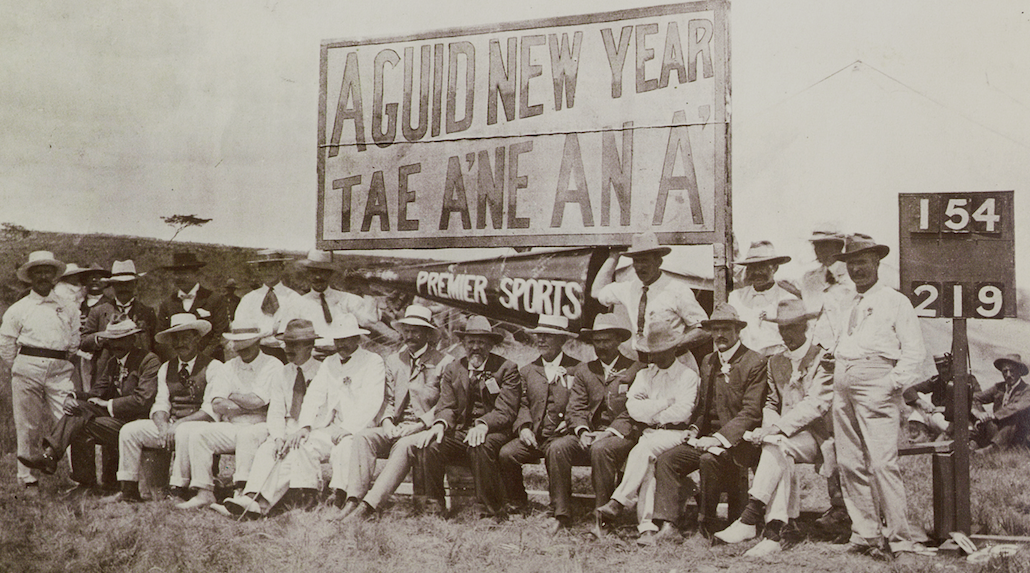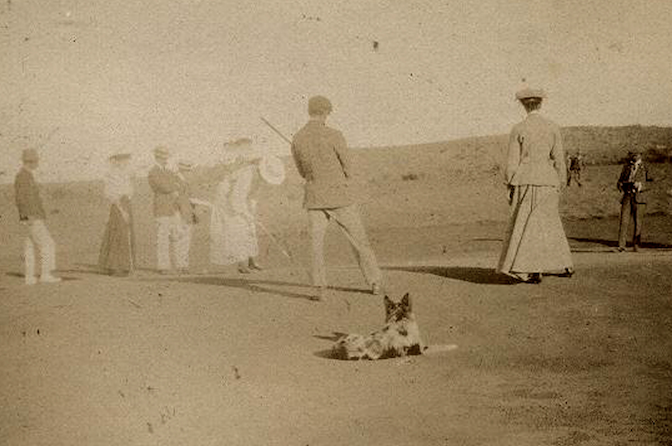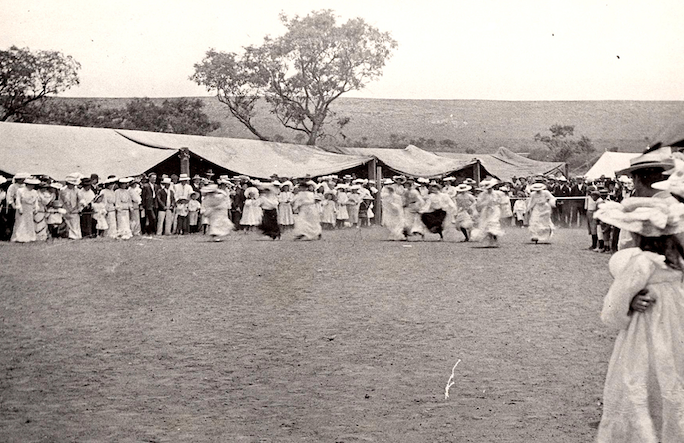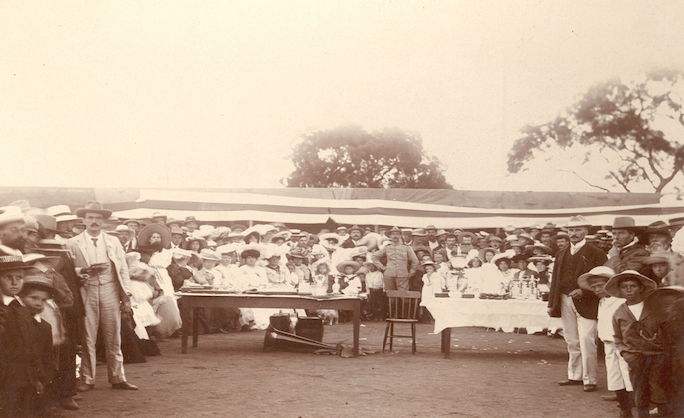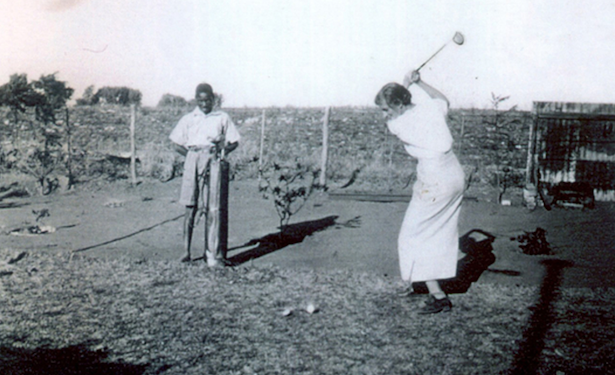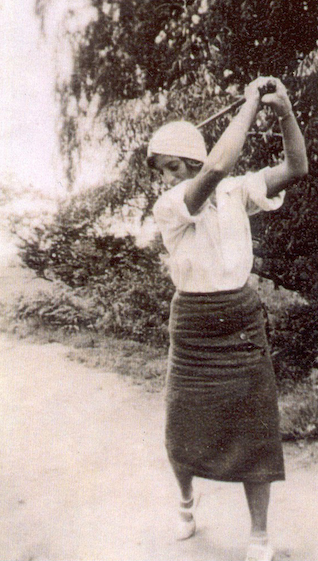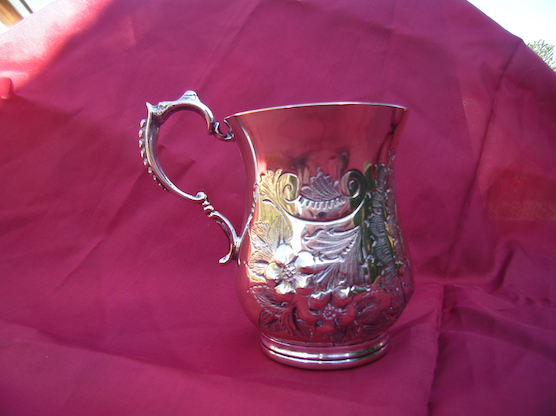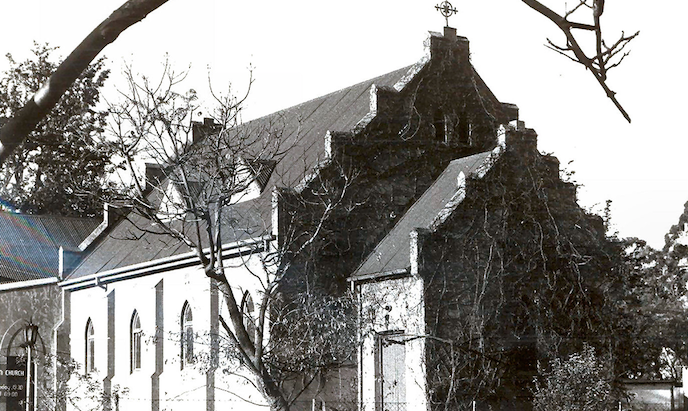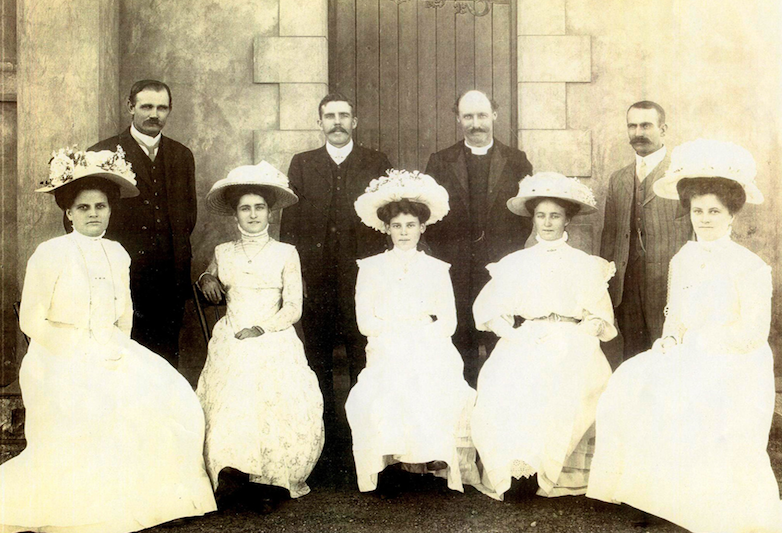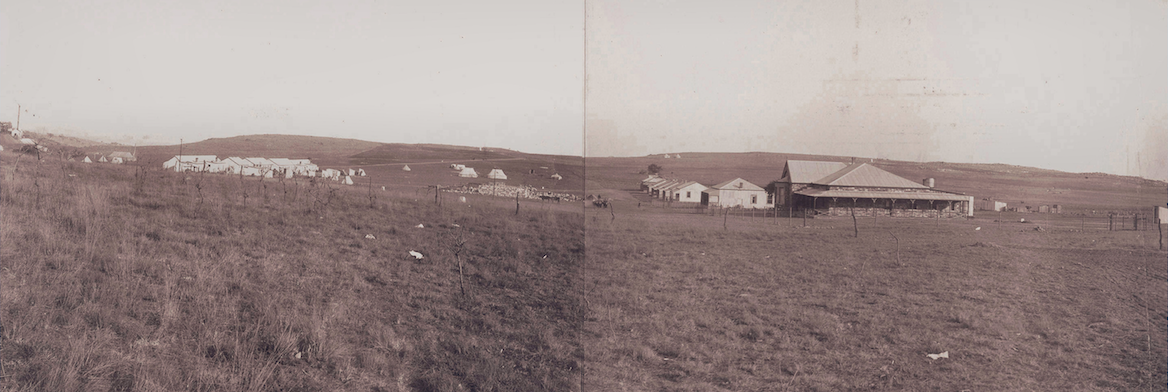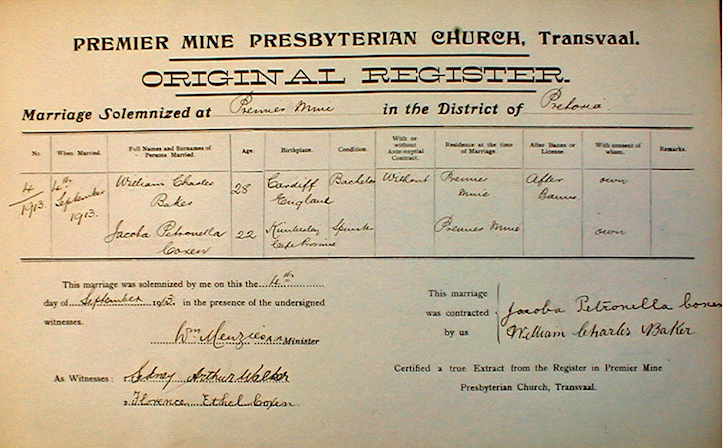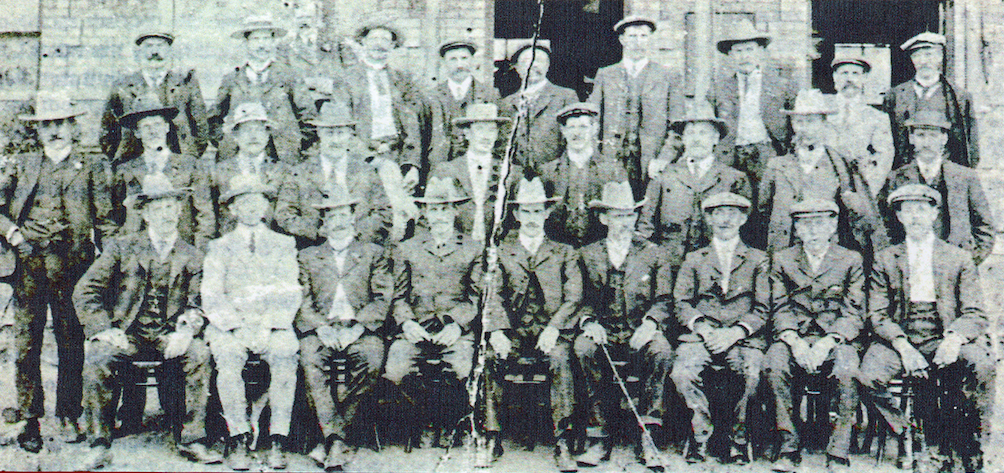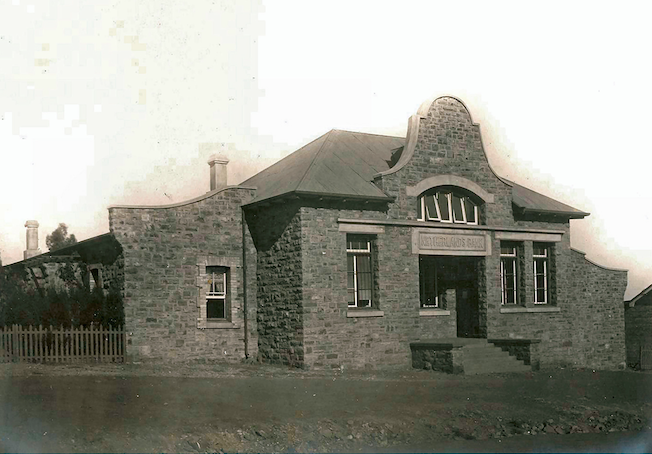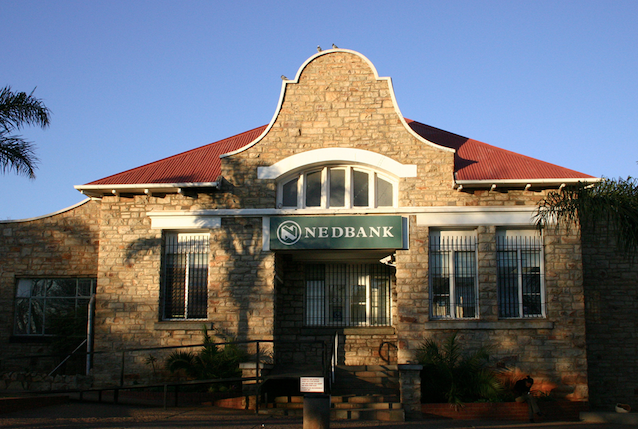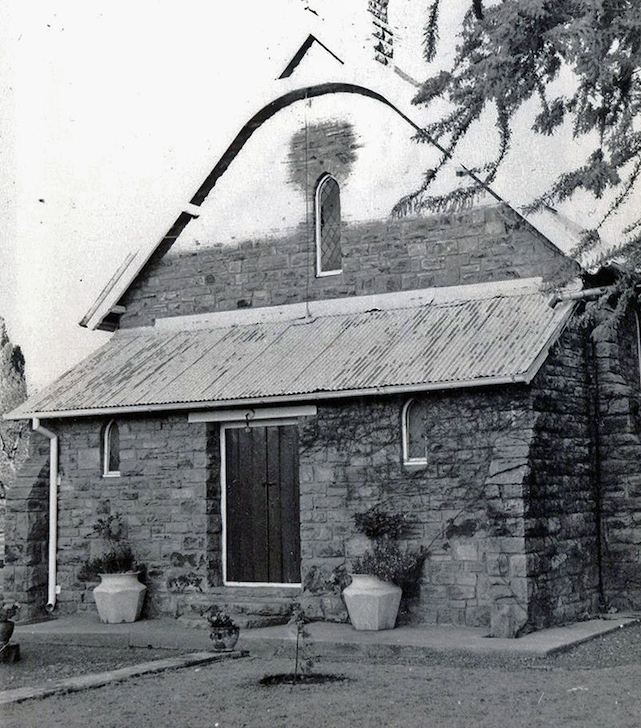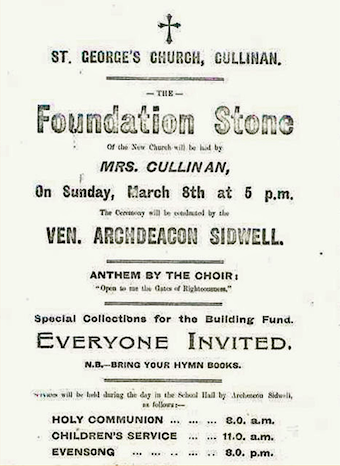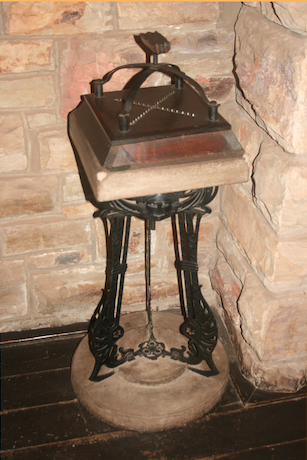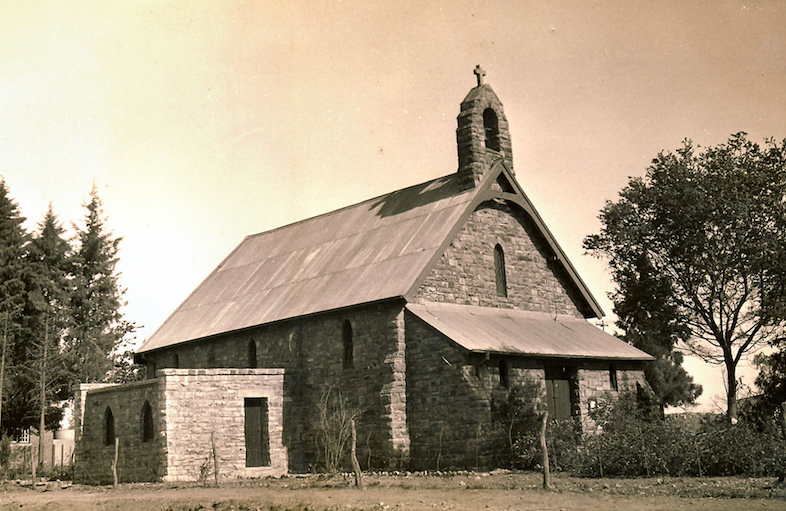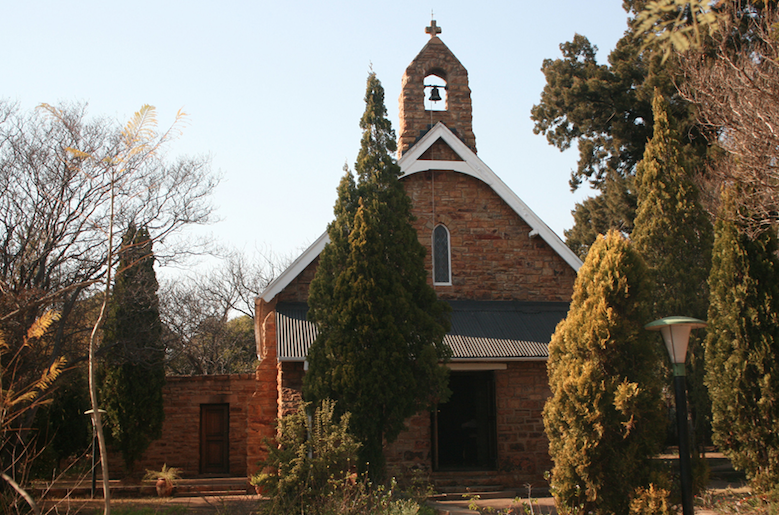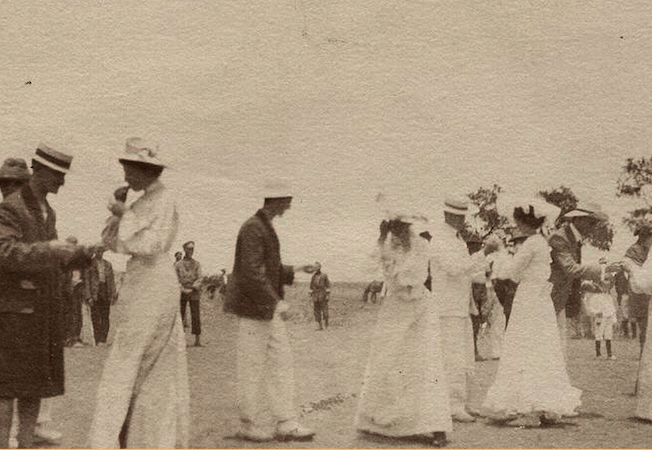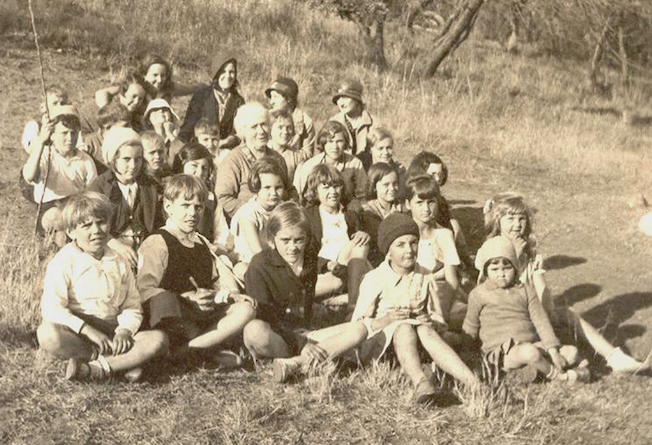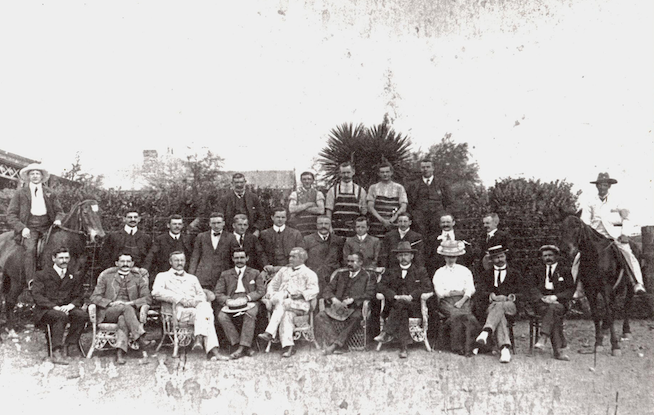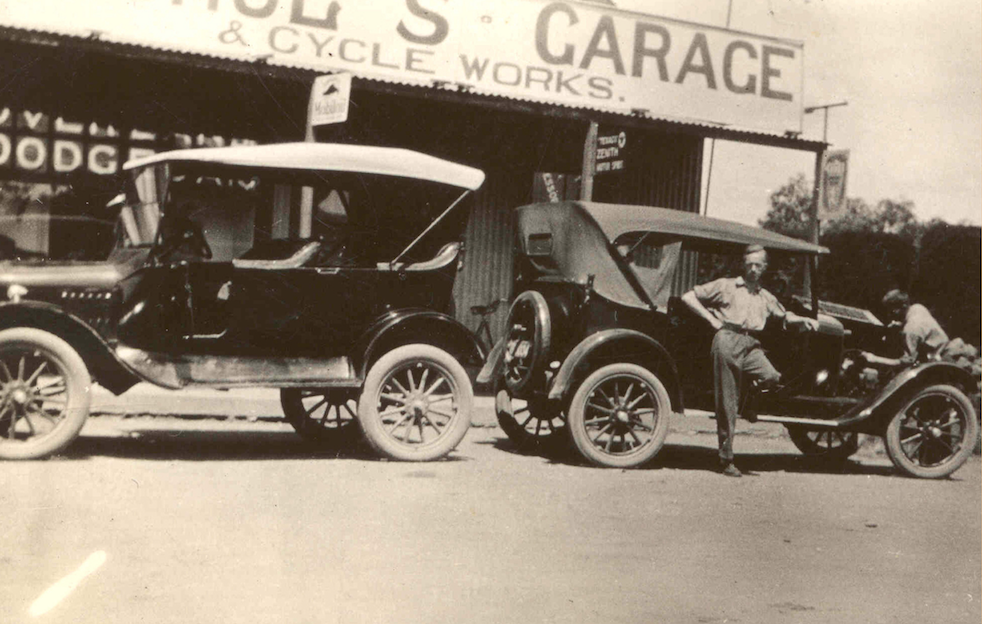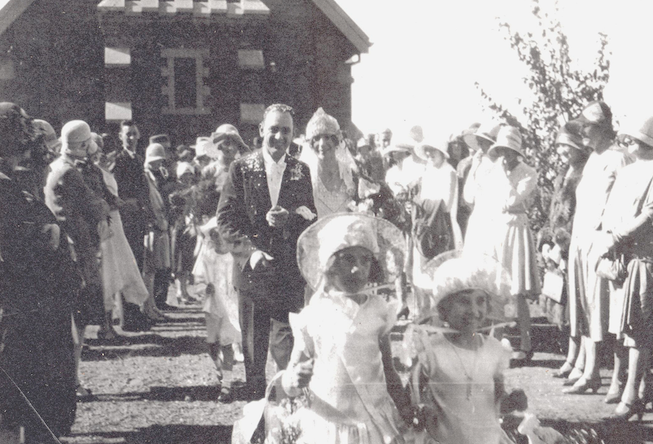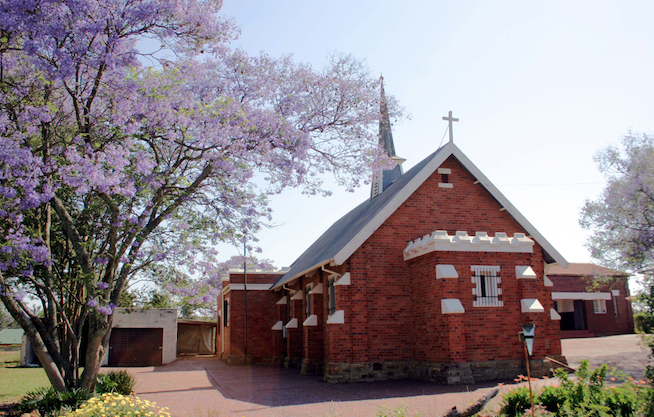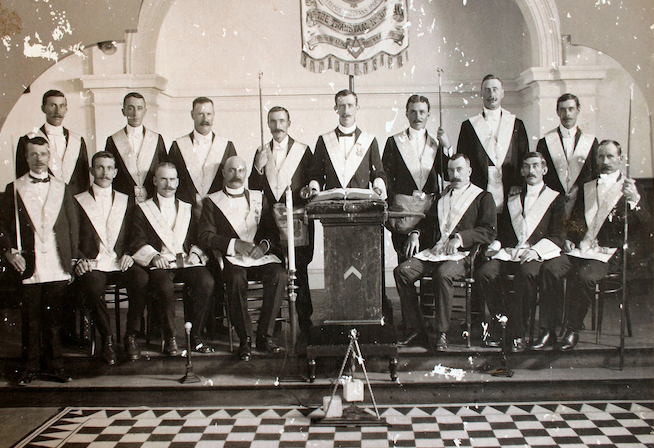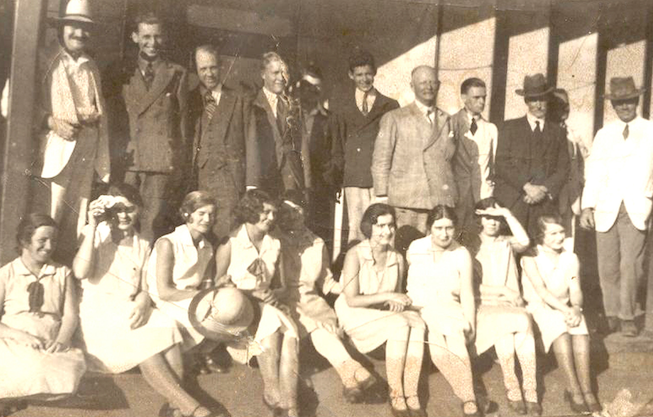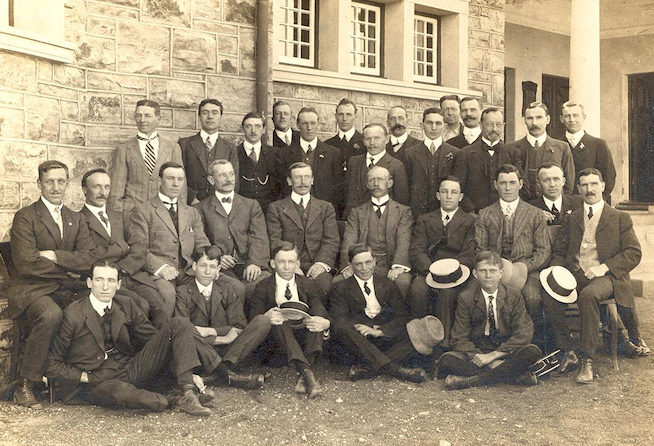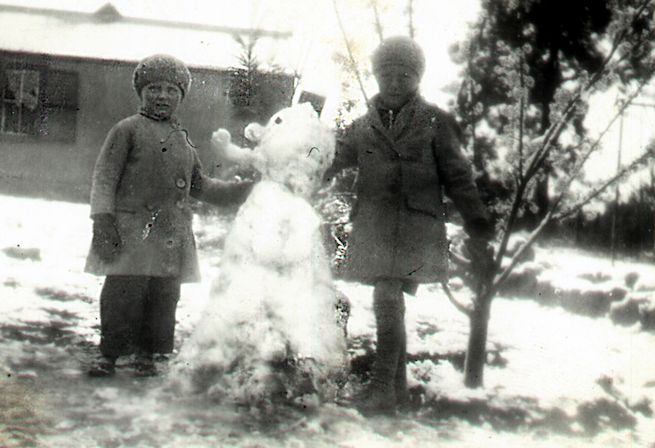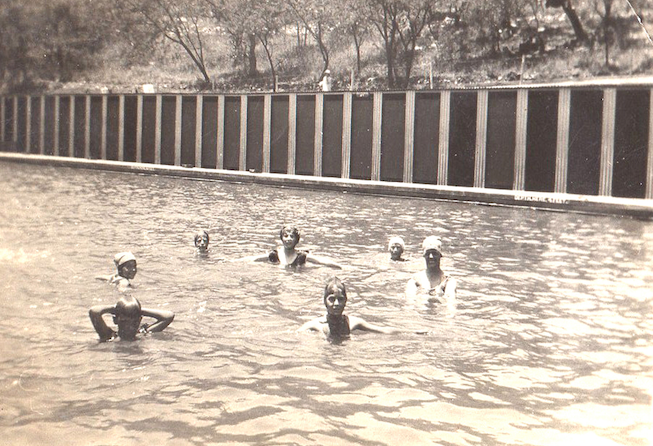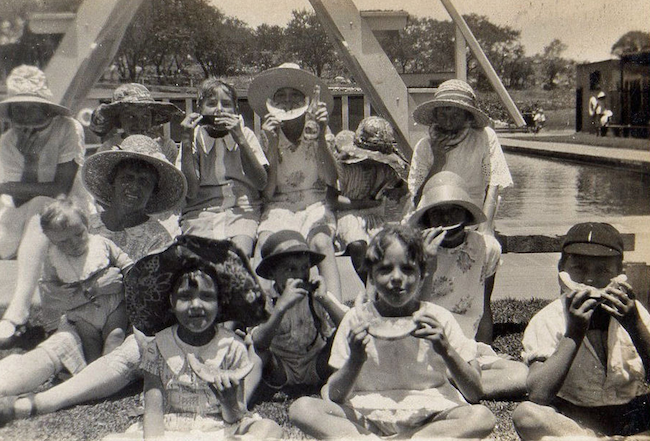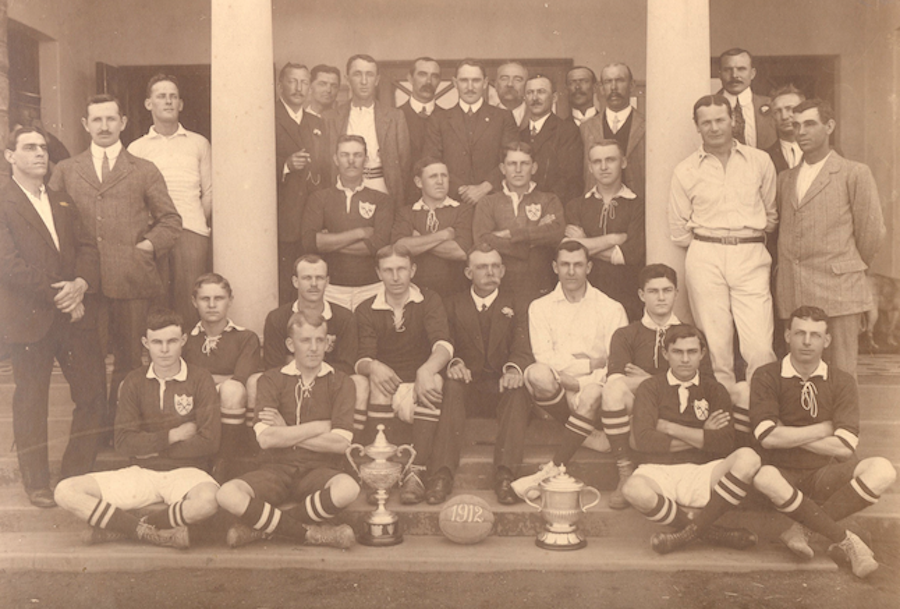
Disclaimer: Any views expressed by individuals and organisations are their own and do not in any way represent the views of The Heritage Portal. If you find any mistakes or historical inaccuracies, please contact the editor.
Below is the fifth installment of John Lincoln's series on Cullinan based on his book 'Stories from a Diamond Mine'. As the title suggests it looks at the sporting activities and vibrant personalities of the village. Click here to view the series index.
The exact date is unknown, but one day in 1905 a group of Premier Mine employees got together to form the Premier Mine Golf Club. The area chosen would almost certainly have been the general area of the present-day Cullinan course.
The group of employees would probably have included William McHardy and AE Pack. McHardy was the first general manager of the mine and Pack the first engineer. McHardy would later become the first president and Pack the captain and champion of the golf club in 1907.
The early workers on the mine were a mixture of various races, first and second-generation South African nationals, and a large contingent from the British Isles. Some of these were soldiers who had stayed behind after the recently ended Boer War and others were from the mining camps of Kimberley.
There is evidence that the British nationals included large numbers of Scotsmen. As the inventors of the great game of golf, it would not be difficult to imagine that they would have had something to do with the formation of the golf club. In fact, William McHardy was born in Ballater in Scotland.
It appears that sport was an extremely important part of life in those early days, and pictorial evidence suggests that even as early as New Year's Day in 1903, a sports day took place in the village. This would have been held in the approximate position of the soon-to-be-formed golf club.
The Scottish connection can be seen by the message for a good new year. Seated in the darker suits are Thomas Cullinan with William McHardy and Fred Wells (Cullinan Mine Archives)
By 1908 there were four football teams and two rugby teams in the village, as well as three separate tennis clubs and even a croquet lawn.
When the golf club was formed in 1905 there were almost certainly no trees, as seen on the golf course today – the area was covered by scrub and a few thorn trees.
One wonders what the first greens must have looked like, a far cry from our greens of today! Without any mowers or machinery, a tremendous amount of work, by the pioneers of the golf course, must have been carried out as, by 1908, pictorial evidence shows the existence of greens that could be putted on.
Earliest known photograph of the golf course taken in 1908 (Cullinan Mine Archives)
Golf course cica 1920 (Cullinan Mine Archives)
One of the tennis courts (Cullinan Mine Archives)
Ladies race at the first sports day (Cullinan Mine Archives)
Prize-giving at the first sports day (Cullinan Mine Archives)
In 1912 the Middleburg Observer ran the following article about the village, which includes comments on the golf course:
Last weekend we visited the Premier Diamond Mine and hope at no distant date to give a short article on that busy hive of industry. The Rifle Club is in a flourishing condition and is one of the best clubs, if not the best, in the country. Each week they shoot for a spoon which is keenly competed for. Last Saturday it was won by Mr Boutcher; Mr Bright made the best aggregate. Mr Canis is the secretary, should any team be looking for a match.
The bioscope, run by a local syndicate, is showing twice a week in the Recreation Hall to crowded houses. They give an excellent programme. The music is supplied by Miss McCleod, Premier's premier pianist.
The golf course is in good order and some of the players are amongst the best country golfers. Mr Anderson is a dark horse from whom good account will be heard.
Our friend the Rev W Menzies has made himself at home on the Mine and is drawing large congregations. He has a membership of about 250.”
The Ladies’ section of the Golf Club
The ladies’ section was formed in 1913, although no records exist of membership before 1930. The course layout in those days also did not indicate if there were dedicated ladies' tees. In those early days, the ladies were only allowed to play during the week and, if they asked very nicely, also on a Saturday but only from 2:30pm.
In 1930 there was a Thursday afternoon club, which was a club within a club, and if any lady wished to join this elite band of ladies, all the members of this Thursday Club had to agree. From the minutes of the ladies’ section, it is apparent that this elitist club would cause endless problems and, at a special general meeting in 1931, the restrictions were rescinded, leading to the resignation of the captain and secretary. At another time, a captain resigned because the restrictions were not dropped. How the Thursday Club eventually ended up is not recorded.
One interesting item in the minutes in 1951 was: "The ladies will be responsible for the towels and the men must take responsibility for the beer." Nothing has really changed to this day.
In 1952, the ladies asked permission for an honours board which was duly granted. The honours board was backdated and the first champion recorded on the board for 1948 was a Mrs P Bennett, who in fact had played golf on the course from 1931.
When the army appropriated five of the holes for camps during the war years she took up bowls and gained provincial honours, but according to her daughter, golf remained her first love.
Phyllis Bennett in action (Bennett Family)
Permission was granted to the ladies in 1962 to follow the men's field on a Sunday. It was only in 1967 that the men's committee agreed to allow the ladies to play in the Saturday competition, on the condition that handicaps would be set at a maximum of 24.
In 1975, for the first time, the men's and ladies’ championships were held at the same time.
In 1977 the ladies’ section achieved its greatest feat when it won the Northern Transvaal League. This was no mean achievement as the club was, and still is a lot smaller than the Pretoria clubs.
A few years ago De Beers introduced an in-house magazine called the Cullinan Chronicle. Among the contents was a letters’ page where many of the old residents of the village wrote about the early days of the village. A few have been included here.
In April 1975 Alice Walton (nee Garrow) wrote: "I arrived on the mine in 1917 and lived in 94 Oak Avenue until 1925. My grandfather was the foreman blacksmith and a very keen golfer. I married Jim Walton, electrician in the Presbyterian Church on the 15th of April 1925. Jim Walton's brother, Robert, was the first baby to be born on Premier Mine on the third of March 1904, and was presented with a perambulator and an engraved cup by the company."
Engraved cup presented to Robert Walton's parents (Walton Family)
The Presbyterian Church where Alice Garrow married Jim Walton (Walton Family)
Rev. Flett and churchgoers in front of the Presbyterian Church circa 1908 (Walton Family)
Looking down Oak Avenue. Oak house on the right with the cottages in the construction phase and Canvas Street in the background (Cullinan Mine Archives)
Edna May Walker
Edna May Walker was born on the 4th January 1909. Edna and her sister lived with her parents at 7 First Street in Hallsdorp so named after the first manager of the compounds, a Mr Hall. The houses have long since been demolished and only the remains of the foundations indicate where this area of the village was.
In her later life, Edna wrote a book about growing up in South Africa. In this book she relates that at her birth and that of her sister, her mother was attended by a Dr Lister. Edna mistakenly thought that the doctor was the famous Joseph Lister of antiseptic fame. The doctor was, in fact, a Spencer Lister who at that time was employed by Premier Mine as its doctor.
The following is an article written in 1979 by A Grieg:
On the north side of the hospital there is a small red brick building consisting of a couple of small rooms. It was in this room that a Dr. Spencer Lister carried out some research work on what today is called Miners Phthisis and Lung troubles amongst the native Miners. He was assisted by a Mr. Webb who had been trained as a Laboratory Technician at Netley Hospital on the Isle of Wight in the Solent in England.
Although Lister was the mine doctor his work came to the notice of the British Association (Scientific Society) who had their conference in South Africa in 1905. The recognition of Lister’s work caused him to be transferred to Johannesburg where he eventually made a big contribution to the Phthisis problem and earned for him the Directorship of the S. A. Institute for Medical Research. Mr Webb did not follow him but did a lot of useful work in connection with the company’s Native Hospital for many years.
Edna also relates in her book about an “uncle” Billy Baker who used to visit her father and how one day he brought a beautiful woman with him when he visited them. In her book she says that they got married. The certificate of marriage pictured below almost certainly relates to the same couple, as her father, Sidney Arthur Walker, was a witness.
The marriage certificate (Presbyterian Records)
A year later, she continues, Uncle Billy came alone to see them and there was talk of death in childbirth. "Research into the cemetery records reveal that after the first burial in 1905 (stillborn) for the next 5 years there were 78 burials in the cemetery of which 36 were stillborn or died within the first two years of their lives.”
She also remembers that Thomas Major Cullinan used to visit them at their home in Hallsdorp.
She left Cullinan in 1914 after her father was discharged from the mine.
The following letter from Tom Vanston was published in the Chronicle in 1975:
It is now over 12 years since I went on pension, and every year, without fail I have received a birthday and Christmas card from the general manager for which I am very grateful. Thank you all for the Cullinan Chronicle, it is a wonderful means for the old-timers and pensioners to keep in contact with the old mine and old friends.
As a carpenter, I am very pleased and proud that the carpenter shop, on the cover, stands in limelight framed by Jacaranda flowers. I can remember a time when the carpenter shop was certainly in the limelight, and we were all very proud of George Bright, carpenter and sawyer.
His achievements seem to have been long forgotten. In any case it all happened over 60 years ago when nearly all of the people of Cullinan were not even born and I witnessed his homecoming. He was cheered and carried shoulder high from the railway station to the hotel led by the band playing ‘When Johnny comes marching home again, Hurrah Hurrah’ and ‘Here comes the conquering hero.’ We had a very big brass band in those days. Incidentally I would like to mention here that my dad, John Vanston, came to the mine in 1907 and played the trombone in the band.
You may ask me what this excitement was about. George Bright won the King's cup at Bisley in England. He became number one marksman of the British Empire, a prize greater than a gold medal at the Olympic Games. How big a feat this was can be realised when we are told that dozens of national champion marksmen from all quarters of the globe took part. When the cup later arrived at the carpenters shop I am told that the cup was not empty, at least not for long.
One more item of the history of Cullinan. Our headmaster's name was Underwood and you can guess it, it wasn't long before the scholars changed his name to “underpants.
Very poor photo of the 21 carpenters in 1910, the year that George Bright won the King's Cup at Bisley in England (Cullinan Mine Archives)
Bert van Jaarsveld wrote this letter in 1976:
Shortly before the end of the First World War Cullinan was also stricken by the great flu of 1918. There were only two resident doctors, who were virtually working around the clock. Cullinan Primary School with the strong motto of ‘onward and upward’ was closed towards the middle of October and converted into a temporary hospital to take the overflow of the mine hospital.
On the surrounding farms conditions were very bad as well. Often entire families were ill without any help at all. It is still heart-warming to recall that during these black days the mine management went out of its way to assist the locals.
The then manager of Nedbank, a Mr Bodke, and the Rev Malan went out to the farms bringing the sick to the school hospital where they were cared for by Matron du Toit and the chief medical officer Dr Archie Gow.
These spontaneous services were given free of charge by the mine officials and this fine gesture still lives in my memory. Deaths were inevitable and I was badly shaken when on the morning of the sixth of November 1918 I lost my best friend. It was particularly sad, as his entire family went down with the flu on their farm some 30 miles away. Towards the end of the year the epidemic eased and we resumed schooling in January 1919.
In the early days there were only two dairies on the mine. These belonged to a Mr Whyte and Mr Black respectively. One morning a Mrs D., resident in Library Avenue taxed a delivery boy with ‘Are you throwing dirty water into the milk?’ The prompt reply was ‘No miss, we only throw clean water in the milk we sell.’ A few months later Mr Whyte was really in trouble about this malpractice and obliged to cease.
One evening my roommate was invited to a sheepskin (boeredans) to celebrate a birthday on a nearby farm. On realising that there would be no moonlight that night, my friend set out on ‘Shanks-pony’ carrying a lantern. He apparently spent a most enjoyable evening and my mirth knew no bounds when I woke up the next morning to find the canary cage on a bedside table. Who needs a light anyway!
Premier mine went from strength to strength until the world depression started in 1930. The mine was closed down and only a few men were kept for maintenance purposes. The general manager, Mr Donald McHardy, was moved to Kimberley.
The trading store, hotel and bottle store remained open on a very small scale and during the years that followed, Premier mine became almost a ghost town.
The Netherlands Bank where Mr Bodke was a manager (Cullinan Mine Archives)
Nedbank today (John Lincoln)
Another letter from Tom Vanston published in the Chronicle:
Many thanks for your good wishes on the occasion of my birthday on the 25th of July. I have a soft spot in my heart for the Premier mine, as I spent the happiest years of my life there, and three of my six children were born there.
As a small boy I stayed on the mine at 25 Canvas St. from 1907 until 1913, near to the present general offices. We lived in a marquee tent with wooden floor, with two partitions across the centre, which gave us four separate rooms. Canvas Street was so named because of the tents.
We lived there while my father, assisted by two Scottish workmates, built our house. In those days many of the artisans on the mine were Scots. I came back to Premier again in 1929 and worked there until 1931.
During the war I was at Zonderwater for some months. One day a certain sergeant said to me: ‘This old mine is finished, worked out, no more diamonds here.’ I told him, ‘no, this mine stopped working because there's too many diamonds.’ I don't think he believed me.
A brief history of St George's Cullinan
St. George’s Church was designed by Sir Herbert Baker and built by Barrow. Thomas Cullinan offered to provide all the bricks for the buildings, but as transport was so costly it was decided to use local stone. The church was completed about the end of April 1908 and the foundation stone was laid by Mrs. Thomas Cullinan.
St George's Church
Invitation to the ceremony for laying the foundation stone of the church
The first priest was the Rev. T Cutten. The altar was made and presented to the church by Mr. Lockett, who was a priest at St. George’s.
The walls around the church grounds and the stone work in the garden were donated by Dick Goldberg who was the hotel manager. The teak gates were given by Mr. Wellington, who was also a priest at St. George’s. The aloes in the garden were planted by the Guides and Scouts.
The memorial plaques on the wall on each side of the altar are in memory of Arthur Oates, churchwarden from 1923 to 1942, given by his wife, and the other plaque, in memory of Peter and Mildred Mitchell, given by their children. The ashes of Mr. and Mrs. Mitchell lie together in the church garden, which is as they wished.
Church font (John Lincoln)
Official Parochial Register of St. George’s Premier Mine
1925: Font given by Mr. & Mrs. Nutty dedicated in memory of their little son Richard Edward Nutty. The dedication was performed by the Lord Bishop of Pretoria on Easter Day (April 12) 1925. On this occasion, the Bishop also dedicated a new chalice, subscribed for in part by the children who brought their lent savings each week for this special object.
1927: The Rev. W. Lockett resigned at the end of Jan 1927 and was succeeded by the Rev. W O Wellington, Vicar of Witbank. On the 3rd Sunday in Advent 1927 (Dec. 11) the Bishop dedicated an altar given by Mr. and Mrs. Silva-Jones in memory of their son Douglas. The altar is made of Burma teak, with a small marble Mensa set into the top.
1928: Seats made of Oregon pine were placed in the Church, the congregation contributing to the cost £108.
1931: Electric lights and fittings in the nave presented by A.R. Scott in memory of his wife. July 6th - Mine went onto the half-shift pay. Oct. 1st - The Rev. W.O. Wellington took charge of the Parish of St. Hilda’s Gezina, together with St. Georges Premier Mine. For the services held monthly at Premier Mine.
1932: Mar. 31st - Mine closed down. Between 50 and 60 men still employed guarding, cleaning up etc. some others put on pension. Old employees allowed to stay on property and given free house, light, water and sanitary services. Grants from £2 given to necessary cases from Benefit Fund, men gradually found work elsewhere and families left.
1933: “Jonker” Diamond found at Elandsfontein in diggings. Sold for £61 000. Oct - Mine hospital closed.
1934: Jan - 90 families living on mine property. Feb - 70 people, men, women and children left the property.
1939: Mar - Grants from Benefit Fund ceased. Grant of £15 given by Company towards moving expenses to those who left during month. At the Vestry meeting it was decided to sell the Vicarage. The offer of Mr. P. Bormann of £200 cash being accepted.
Anglican Church 1932 (Andrew Webber)
A more recent photo of the church (John Lincoln)
Below are a few more photos showing the sporting and social life of the village:
Garden Party
"Brownies picnic at the swimming bath in 1926" (Cullinan Mine Archives)
Co-op stores staff - early days of the Premier Mine (Cullinan Mine Archives)
Nichol's Garage (Cullinan Mine Archives)
Wedding at the Catholic Church (Cullinan Mine Archives)
A recent photo of the Catholic Church (John Lincoln)
The Masonic Lodge (Cullinan Mine Archives)
Co-operative staff circa 1930 (Cullinan Mine Archives)
Electrical staff at the Recreation Club circa 1920 (Cullinan Mine Archives)
Snow fell in the village in 1931 (Cullinan Mine Archives)
Swimming pool built in 1921 (Cullinan Mine Archives)
Day out at the swimming pool (Cullinan Mine Archives)
Comments will load below. If for any reason none appear click here for some troubleshooting tips. If you would like to post a comment and need instructions click here.

